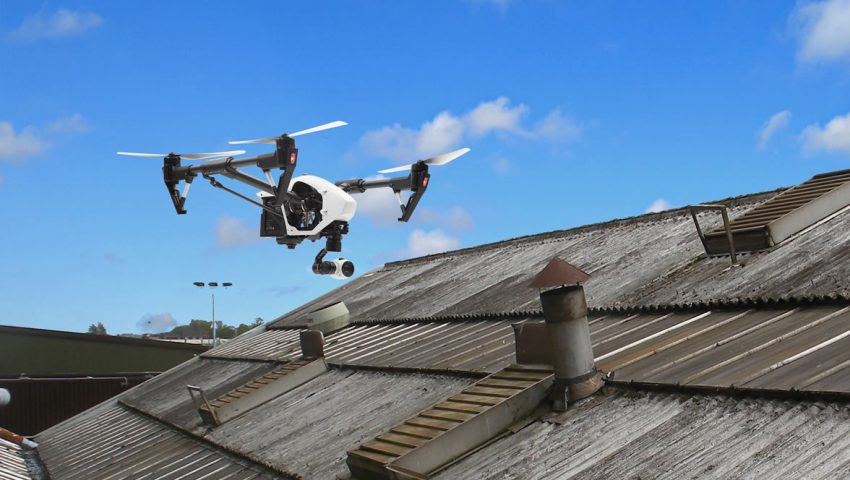If your residential roof, commercial roof or flat roof has storm or hail damage, a roof inspection is required to assess the roof damage. Usually a roof inspector will be onsite to assess the roof damage. However, the latest drone technology is used to assist roof inspectors with evaluating roof damage and hail damage.
The typical process to evaluate roof damage is a comprehensive multi-point inspection for wind damage and hail damage to roofs. A qualified roof inspector will inspect the roof, gutters, windows siding, fascia, garage door, fence, deck, A/C unit, along with the entire exterior of the building. The roof inspector will take pictures with a digital camera and write a report about the roof damage.
Drones are finding new applications such as roof inspections, and new industries have embraced the use of drone technology. Drone roof inspections can be done faster and at a lower cost than sending a roof inspector to the site. When roof tiles or roof materials are damaged, putting a human roof inspector on top of the damage carries a risk not only to the human but also to the roof itself. A drone can do a complete detailed inspection of roof damage with no risk to the roof or to the human roof inspector.
The primary benefit of using a drone for roof inspections is the speed and convenience of the process. The drone is programmed with a flight plan and the roof inspection occurs faster than a manual roof inspection. The cost of a drone roof inspection is significantly lower than the cost of a manual roof inspection. The drone camera footage is geo-referenced for location accuracy. A drone can inspect roof damage anywhere from 5 to 20 minutes, depending on the angle of the roof, the size of the roof and the amount of detail that must be captured to show roof damage.
Another benefit of drone roof inspections is that a drone can take a picture of roof areas that are hard to see, such as a steep inclined roof. Drone manufacturers are also creating special attachments for roof inspection drones that can detect where heat is leaking in the winter and where air conditioned air is leaking in the summer.
Roof inspections are a whole new market for drone technology. The latest drones have both flight and image stability as well as altitude hold to do a roof inspection. Drones allow a First Person View (FPV) so the roof inspector can see the roof damage that the drone camera is pointing at. A GPS is an essential part of a drone to find the correct building to do a roof inspection. The drone camera should be at least 20 mpx and record in 4k with HD output.
Drone technology is the future of roof inspections, and you will see more and more use cases and applications for drone technology in our modern world.

